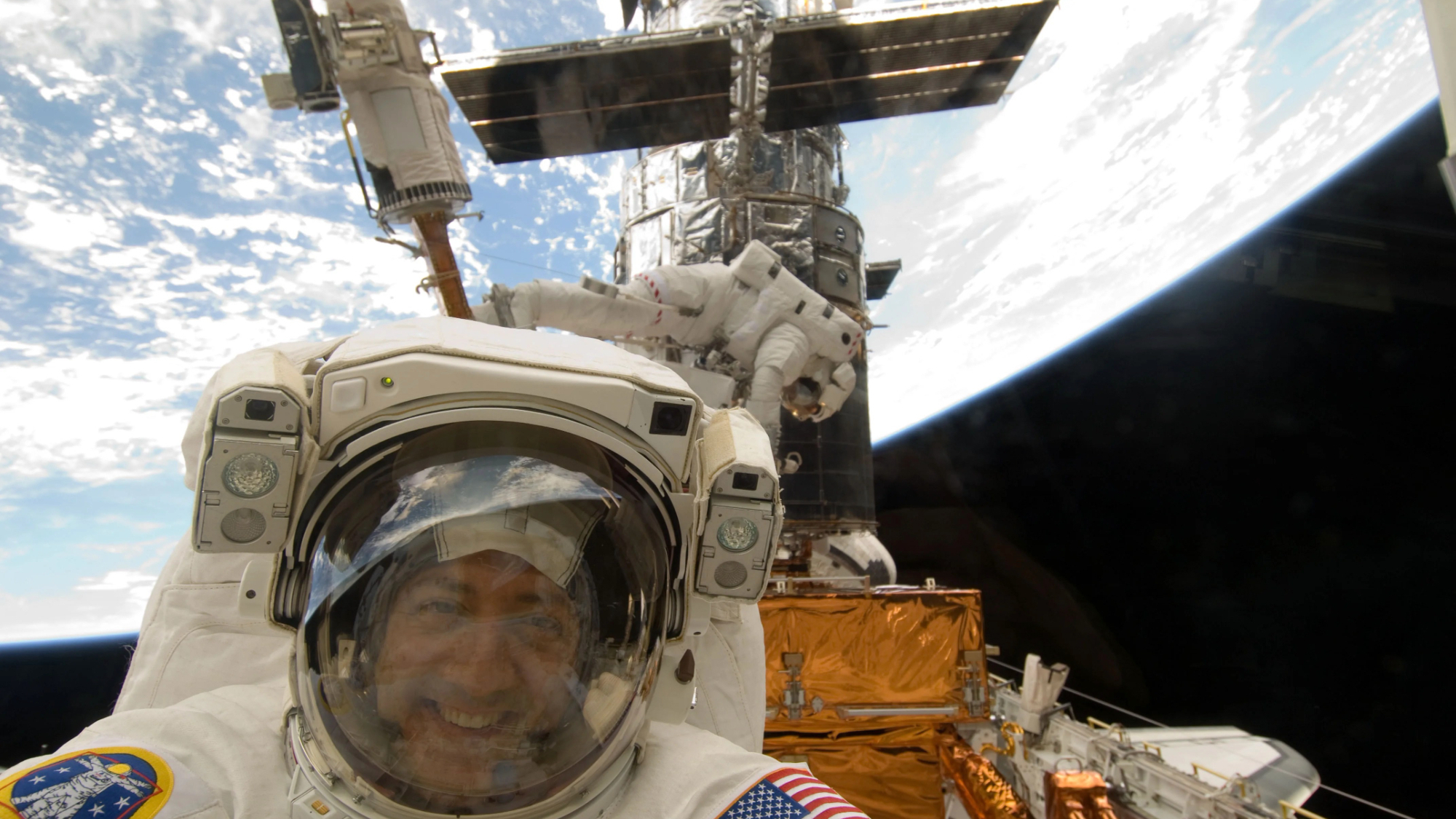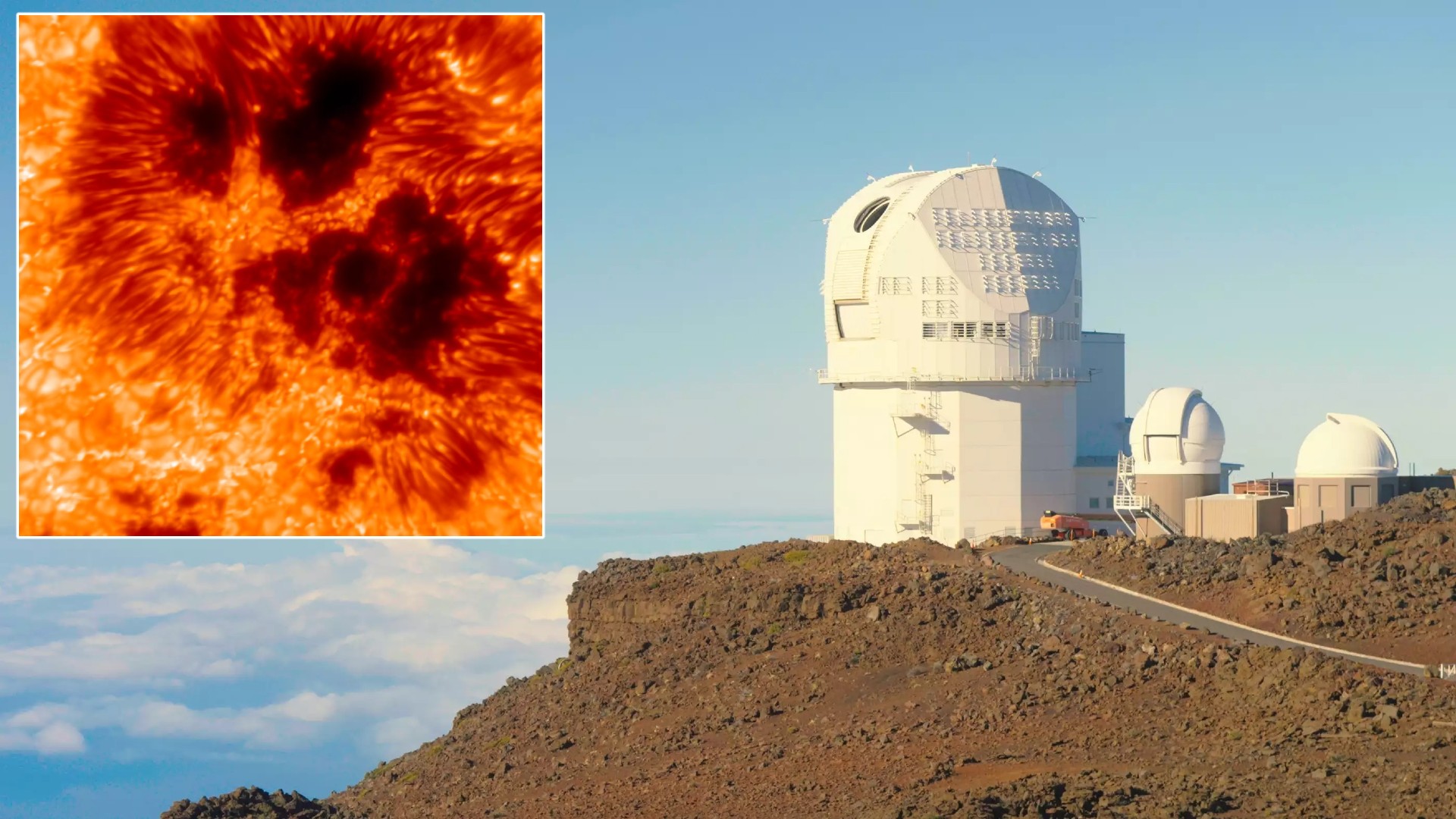Space Image of the Day Gallery (March 2018)
Dione and Ring Shadows on Saturn

Thursday, March 15, 2018: In this view from NASA's Cassini spacecraft, Saturn's rings cast striped shadows on the planet's cloud tops while Dione, Saturn's fourth-largest moon, orbits just below the ring plane. Cassini, which crashed into Saturn in 2017, captured the image in 2005 when the spacecraft was about 500,000 miles (800,000 km) away from Dione. Citizen scientist Kevin Gill processed this image using data from Cassini's wide-angle camera. — Hanneke Weitering
A Flowery Storm on Jupiter

Friday, March 16, 2018: A Jovian storm looks like an impressionist painting of a rose in this image from NASA's Juno spacecraft. Juno captured the image from 7,578 miles (12,195 kilometers) above the tops of Jupiter's clouds on Feb. 7. Citizen scientist Matt Brealey used data from the spacecraft's JunoCam imager to create this color-enhanced view. — Hanneke Weitering
An Elongated Coronal Hole

Monday, March 19, 2018: NASA's Solar Dynamics Observatory observed an enormous coronal hole on the sun last week. The elongated feature stretches over half the diameter of the sun. Coronal holes are regions where the sun's magnetic field has opened up, allowing plasma known as solar wind to flow out into space. — Hanneke Weitering
Pink Milky Way Over Chile

Tuesday, March 20, 2018: Peppered with pink patches of ionized hydrogen gas, the Milky Way galaxy shines over the La Silla Observatory in Chile in this photo by European Southern Observatory photo ambassador Yuri Beletsky. The pink clouds are emission nebulas, or star-forming regions filled with hot, young stars. — Hanneke Weitering
NASA's Mobile Launcher at Sunrise

Wednesday, March 21, 2018: The mobile launcher tower that NASA will use for its new Space Launch System (SLS) is lit up just before sunrise at Kennedy Space Center in Florida. Originally built for the now-canceled Constellation Program, the mobile launcher has been modified for the first uncrewed test flight of the SLS rocket, Exploration Mission 1, which is scheduled to launch in December of 2019. — Hanneke Weitering
Orion's Parachutes Put to the Test
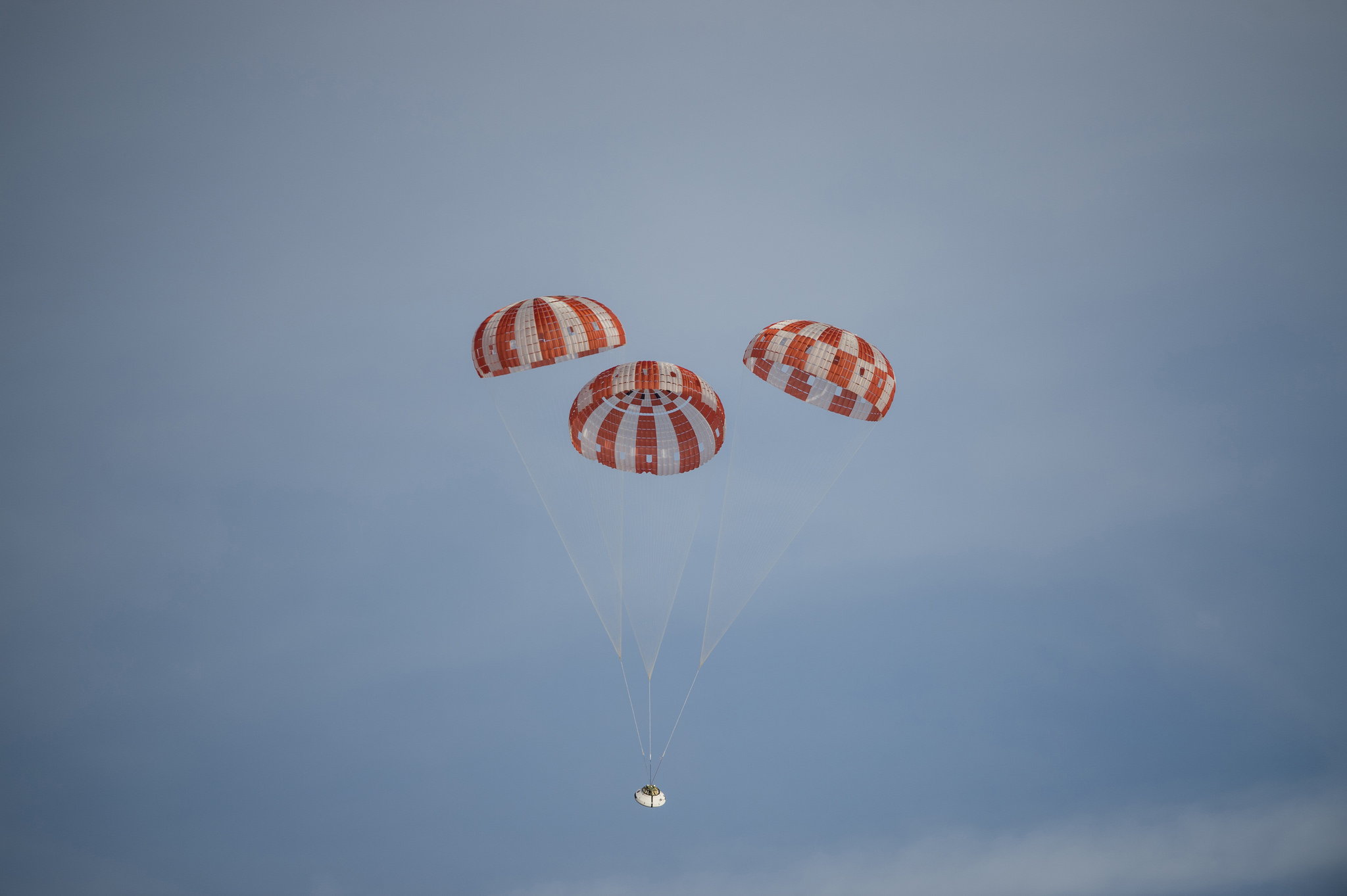
Thursday, March 22, 2018: NASA's Orion crew capsule floats down to Earth after a test of its parachute system on Friday (March 16) at the U.S. Army Proving Ground in Yuma, Arizona. The Orion spacecraft, built for NASA's new Space Launch System rocket, will carry astronauts beyond low-Earth orbit by the mid-2020s. — Hanneke Weitering
Liftoff!
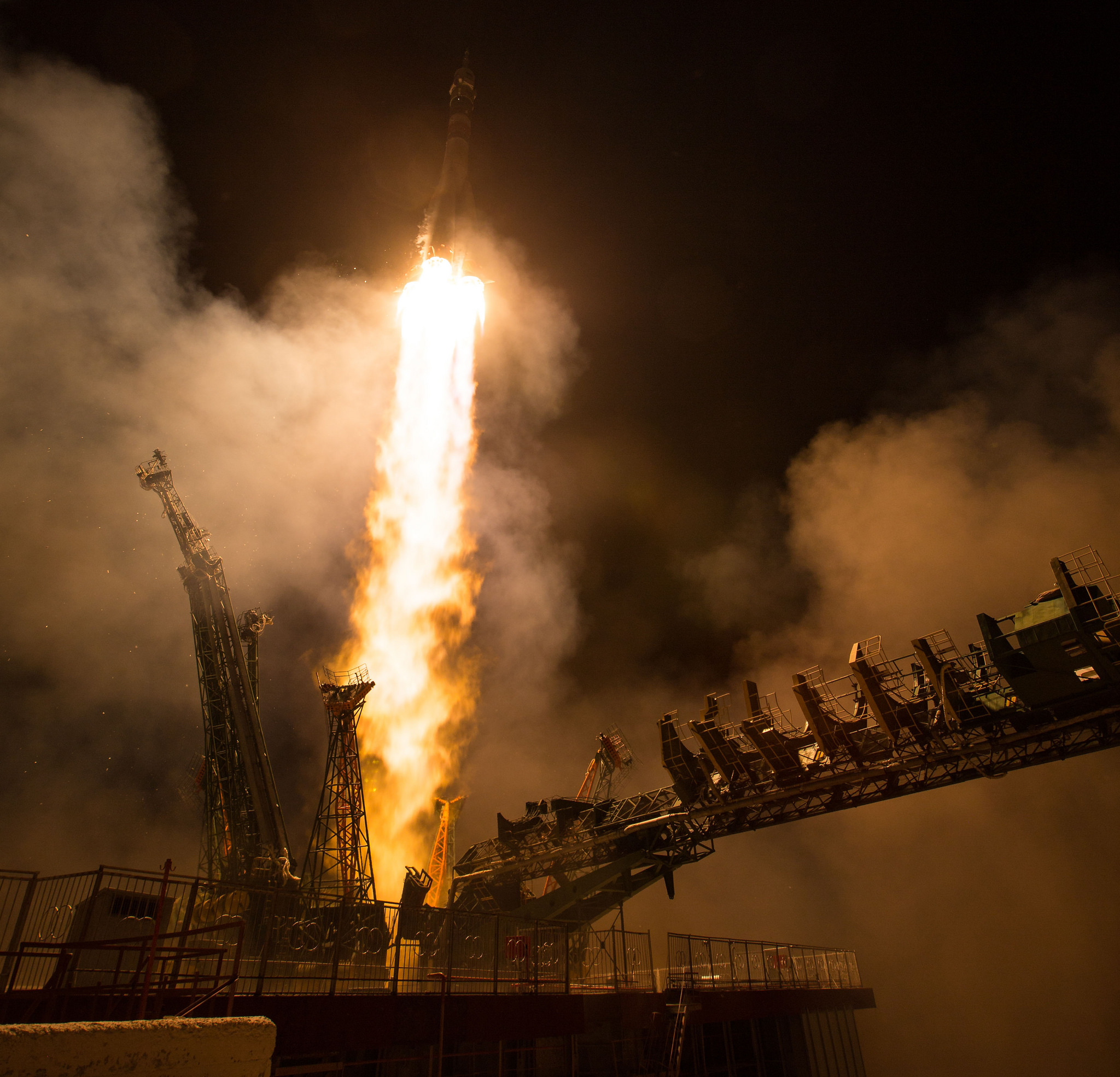
Friday, March 23, 2018: A Soyuz rocket lifts off from the Baikonur Cosmodrome in Kazakhstan on Wednesday (March 21) to send three Expedition 55 crewmembers to the International Space Station. NASA astronauts Ricky Arnold and Drew Feustel and Russian cosmonaut Oleg Artymov will arrive at the orbiting lab this afternoon after a two-day trip in their Soyuz MS-08 spacecraft. — Hanneke Weitering
Get the Space.com Newsletter
Breaking space news, the latest updates on rocket launches, skywatching events and more!
A Cosmic Work of Art

Monday, March 26, 2018: A star-forming region in the Milky Way resembles a Van Gogh painting in this stellar view from the European Space Agency's Herschel space observatory. The image reveals a web of gas filaments, which astronomers believe are responsible for creating new stars. This region is located 7,500 light-years away in the neighborhood of the Carina Nebula. — Hanneke Weitering
Florida's Wildfires Seen From Space
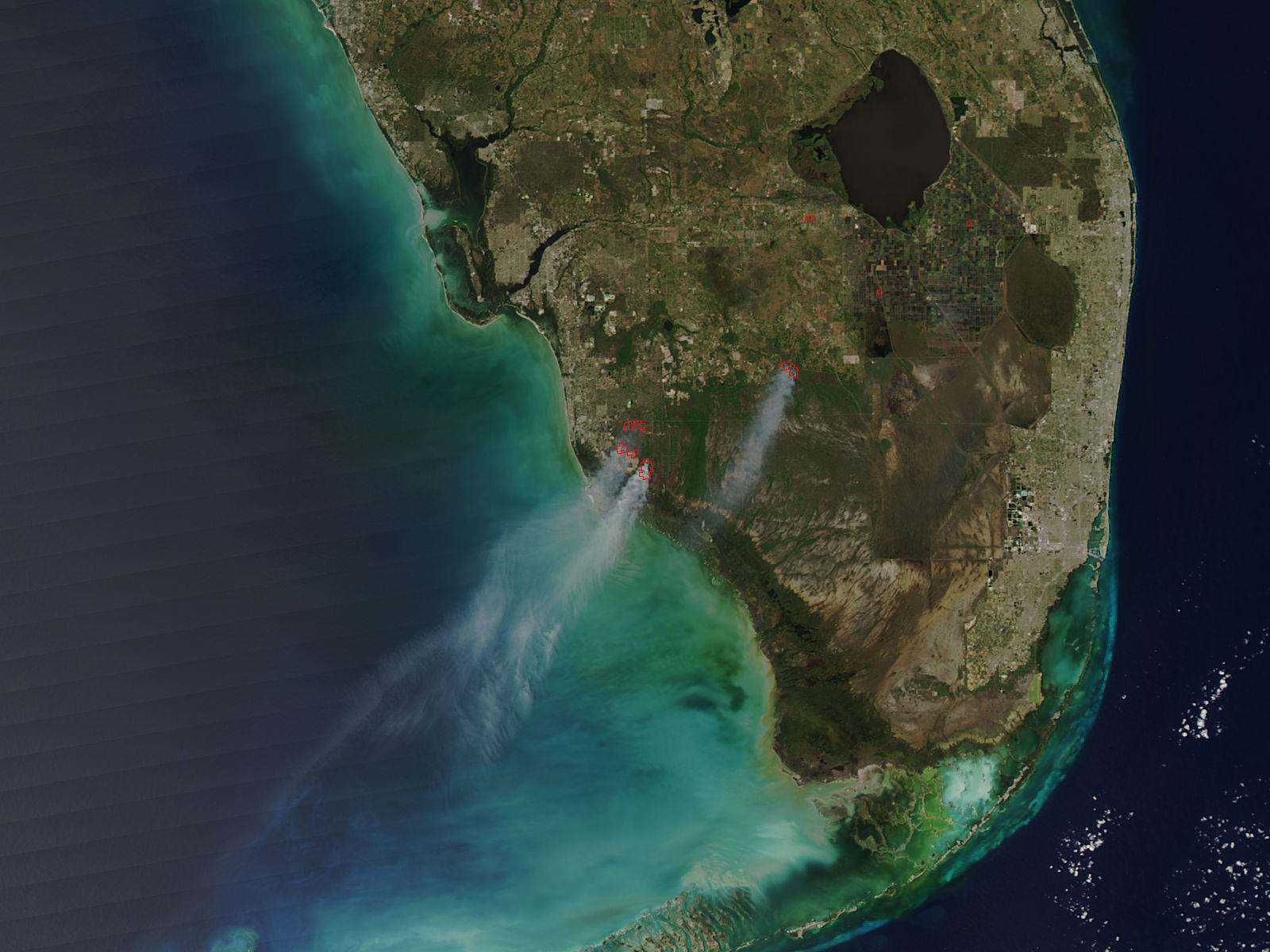
Tuesday, March 27, 2018: As wildfires broke out in southern Florida last week, NASA's Aqua satellite captured this view of the smoke plumes from space. This image taken on Friday (March 23) shows three fires that were believed to have started during a lightning storm on Wednesday (March 21). The Moderate Resolution Imaging Spectroradiometer (MODIS) instrument on the Aqua satellite detected several additional "hot spots," or actively burning areas, which are outlined in red. — Hanneke Weitering
Saturn's 'Ravioli' Moon

Wednesday, March 28, 2018: Saturn's tiny, ravioli-shaped moon Pan is pictured orbiting inside the planet's ring system in this image from NASA's Cassini spacecraft. The strange moon resides in the Encke gap, a 200-mile-wide (325 kilometers) space in Saturn's A ring. Pan, a so-called "shepherd moon," keeps this area clear of ring particles with its gravitational pull. Citizen scientist Kevin Gill processed raw data from Cassini to create this colorized view of Pan. — Hanneke Weitering
Join our Space Forums to keep talking space on the latest missions, night sky and more! And if you have a news tip, correction or comment, let us know at: community@space.com.

Space.com is the premier source of space exploration, innovation and astronomy news, chronicling (and celebrating) humanity's ongoing expansion across the final frontier. Originally founded in 1999, Space.com is, and always has been, the passion of writers and editors who are space fans and also trained journalists. Our current news team consists of Editor-in-Chief Tariq Malik; Editor Hanneke Weitering, Senior Space Writer Mike Wall; Senior Writer Meghan Bartels; Senior Writer Chelsea Gohd, Senior Writer Tereza Pultarova and Staff Writer Alexander Cox, focusing on e-commerce. Senior Producer Steve Spaleta oversees our space videos, with Diana Whitcroft as our Social Media Editor.


